Showing 781–790 of 1125 results

This book is the critical edition of Nutanatarivyakhya, a remarkable commentary by Bhagavatkavibhatta on Rasatarangini, a famous treatise of Bhanudatta on rasa theory. This is an attempt to introduce a versatile but unknown scholar who lived between eighteenth and nineteenth century in Gujarat.
The experiences and knowledge from our past are recorded in manuscripts which have been handed down to us over several thousand years. The Government of India, through the Department of Culture, took note of the importance of this vast tangible heritage and, in order to preserve and conserve as well as to make access to this wealth easy, established the National Mission for Manuscripts (NMM). In order to disseminate the knowledge content of manuscripts, the NMM has taken up several programmes such as lectures, seminars and workshops. NMM has published the proceedings of the above-said programmes under the following series: Samrakshika (on conservation), Tattvabodha (comprising lectures based on manuscripts delivered by eminent scholars), Samikshika (research-oriented papers presented in the seminars), and Kritibodha (transcribed and edited texts prepared at advanced level manuscriptology workshops conducted by NMM).
NMM has taken up a project for publishing rare and unpublished manuscripts in three forms: (a) facsimile, (b) critical edition with annotation, and (c) critical edition with translation. This series has been named as Prakashika. This volume, is twenty-eighth in the Prakashika Series.
This book is the critical edition of Nutanatarivyakhya, a remarkable commentary by Bhagavatkavibhatta on Rasatarangini, a famous treatise of Bhanudatta on rasa theory. Bhagavatkavibhatta was a learned shishya of Ashadharabhatta, a renowned scholar on poetics from Gujarat. The Nutanatari is found in a single manuscript preserved in Oriental Institute, Baroda. It presents Nutanatari along with Rasatarangini text corresponding to the commentary, an introduction and elaborate notes. This is an attempt to introduce a versatile but unknown scholar who lived between eighteenth and nineteenth century in Gujarat, and thus to throw light on the meritorious contribution of Gujarat to Sanskrit Shastric literature.
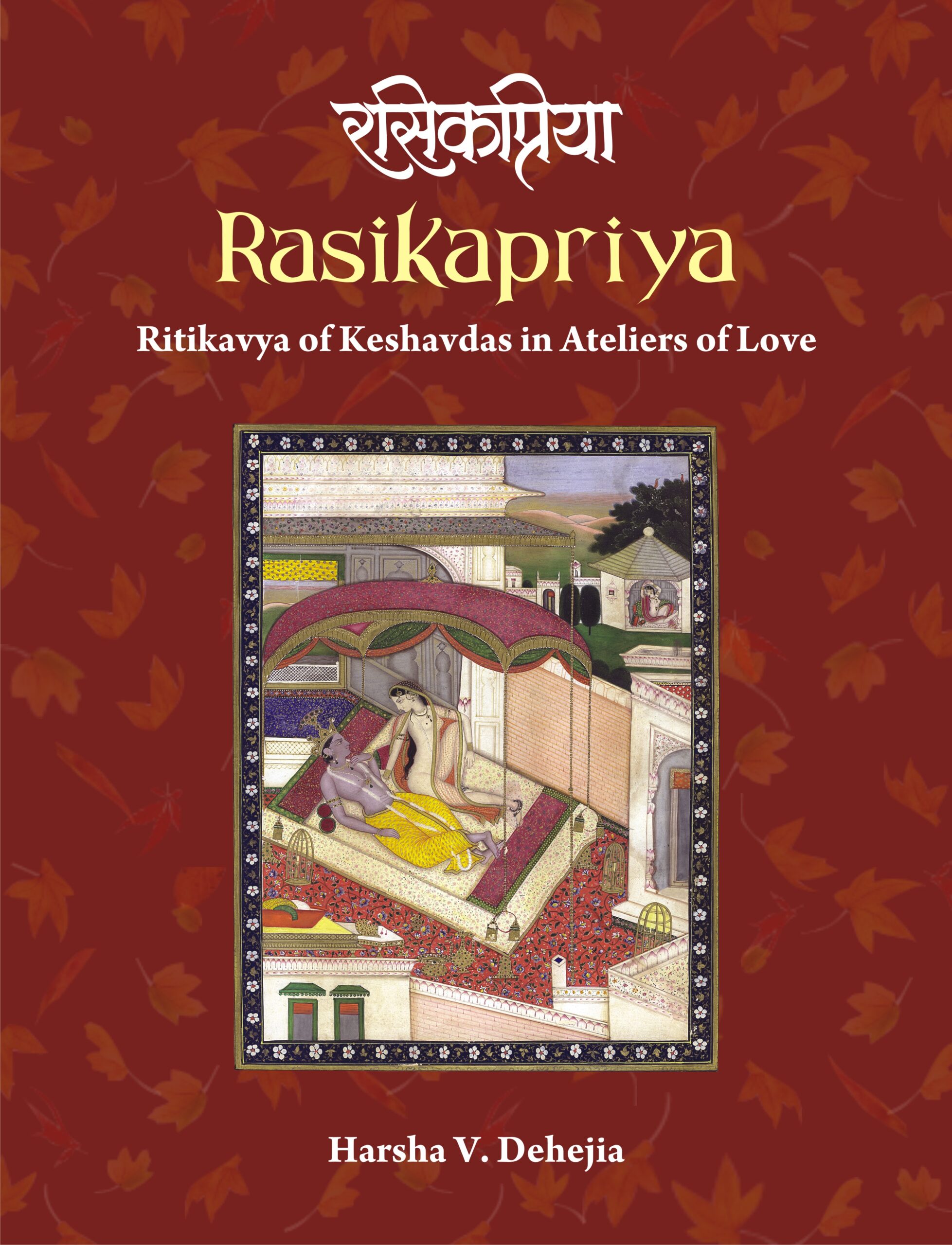
This book brings, for the first time, the translation of the entire text of Rasikapriya of Keshavdas in English with more than 400 paintings. In its pages are whispers of Krishna and Radha, and the hushed voices of the sakhis as they celebrate romantic moments of longing and belonging in the regal splendour of pranaya mandaps of havelis or verdant and idyllic groves.
Rasikapriya is a lakshan granth, a foundational text, of ritikavya or mannered poetry, and Keshavdas is the father of ritikal. It was the early seventeenth century, and in the court of Raja Indrajit of Orchha in Bundelkhand, Keshavdas, the court-poet, would recite short romantic verses and the gathered connoisseurs of poets, musicians and dancers would respond, and the atelier would resonate with the many textures and hues of shringara. This was the beginning of Rasikapriya, a text that is still central in the celebration of love. Keshavdas was a poets poet and he created a monumental text that remains the gold standard of ritikavya even today. And if that was not enough Rasikapriya inspired artists to create paintings illustrating its many dohas and savaiyas even in the lifetime of the poet.
Artists in the ateliers of Malwa, Mewar, Bikaner, Bundi and Kangra, among others, were touched by the evocative poetry of Rasikapriya and created paintings that were visual poetry. The names of Sahibdin of Mewar, Ruknuddin of Bikaner and Purkhu of Kangra stand out as artists that brought Rasikapriya to life through their mellifluous kalams.
Rasikapriya remains one of the most profusely illustrated texts in India and finds a place in collections of museums and individuals alike all over the world. This book brings together, for the first time, the translation of the entire text in English along with more than 400 paintings collected from a variety of sources. In its pages are whispers of Krishna and Radha and the hushed voices of the sakhis as they celebrate romantic moments of longing and belonging in the regal splendour of pranaya mandaps of havelis or verdant and idyllic groves. And as readers of this book recreate the music and the splendour of this text they cannot remain untouched by the sensuality and spirituality of shringara rasa and affirm that in celebrating the loves of Krishna one is never far from bhakti.
The book is a visual delight, a connoisseurs companion and a reference manual for scholars.
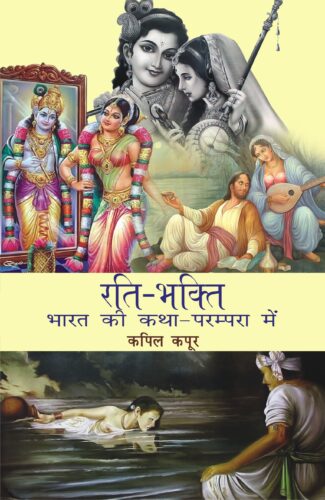
The concept of love-devotion is visible since ancient times in Indian history. In the poems and narrations of love-devotion human love has been depicted in the form of divine love. The love is permanent sentiment of Shringara rasa. Shringara rasa is of utmost importance in the tradition of textual contemplation.
There is intense interrelationship of love and devotion in narrative tradition of India. The concept of Rati-bhakti (love-devotion) is visible in Indian history since ancient times. Love and devotion are two facets of the one and the same fact. In the poetry and prose of Rati-bhakti, the human love is regarded as divine. Here, God and devotee are seen as lovers and, on the other hand, lovers are considered as the form of God himself.
The knowledge of Shastras, not being accessible to all, is propagated through narration. There are unlimited treasures of narratives in all languages and scholarly traditions of India as well as various themes related to manhood-quartet of narration-treasure. In this book, the main focus is on Rati-bhakti (devotion to love). In the cogitation of poetry-text, shringara rasa is foremost and the fundamental one for thinkers like Bhojaraj. The permanent rasa of shringara is love and how this is accomplished in shringara and devotion, is beautifully depicted in this book.
In the folk tales of Punjab, the narrators/poets of Rati-shastra/narrations see love-adorable in divine form and in devotional narrations and poetry, the poets and narrators see their God as their lover or beloved. This love-devotion tradition originated in India in the seventh century ce through the Tamil Alvars in their prabandhas. This tradition remained alive till nineteenth century in the folk tales of Punjab. Since then, owing to Western influence, the love is seen as lust in place of devotion.
In this book the contemplation has been done on tradition, intellectual tradition, the knowledge of narration and means of narratives, the relationship between knowledge and narratives.
This book sould prove to be thought-provoking and interesting for students and scholars of philosophy, language and literature as well as for the common readers.

Prof. Puligandla reveals the central Upanisadic insights and the significance of the observations to modern scientific thought. He comes up with ideas on the nature of the ultimate reality, compatibility of science, religion and philosophy, etc.
Since ancient times, philosophers and scholars have attempted to study and analyse the profound thoughts of the Upanishads in order to unravel their true meaning. The lectures presented here are a fresh analysis of the Upanishadic thinking with respect to reality, knowledge and consciousness. Prof. Puligandla here attempts to reveal the central Upanishadic insights and the significance of the observations to modern scientific thought. He comes up with some important ideas on the nature of the ultimate reality, compatibility of science, religion and philosophy, and the Upanishadic teaching vis-a-vis modern science. He also successfully dispels crucial misunderstandings of Shankaras philosophy and that of Nagarjuna. The speciality of the book is the authors novel interpretation of mysticism as an effective instrument of Brahma jnana or knowledge of Reality. In a bold and intellectually stimulating presentation, Prof. Puligandla shows that the mysticism of the Indian tradition, far from being illogical or irrational, is meant to awaken and inspire the seekers mind for the quest of the ultimate reality. Such knowledge even transcends all forms of catogorial knowledge. This work is an extremely absorbing scholarly masterpiece characterized by a unique understanding of Upanishadic thought. Its lively yet analytical discussion of the Upanishads would present a new perspective to serious scholars of philosophy.
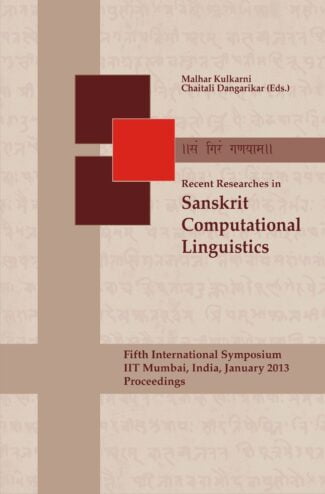
This volume deals with the computational modelling of Panini’s grammar Astadhyayi together with supplementary texts, computational tools for Sanskrit language and their applications in the traditional Sanskrit concerns. It is an important initiative in the filed of Sanskrit computational linguistics as it records insightful current trends in the field.
This volume is the proceedings of the 5th International Sanskrit Computational Linguistics Symposium (ISCLS), held at IIT Bombay during 4-6 January 2013. These proceedings include fourteen selected and three invited papers. The selected papers deal with topics such as computational modelling of Panini’s grammar Ashtadhyayi together with its supplementary texts, computational tools for Sanskrit language and their applications in the traditional Sanskrit concerns. Accordingly, this book delves upon how clues from Ashtadhyayi help in identifying compound types; how Ashtadhyayis digital edition can be structured and implemented; the completeness analysis of a Sanskrit reader; graph-based analysis of parallel passages; some relation-specific issues in parsing Sanskrit texts, text normalizer for Sanskrit; extended Nyaya-Vaisheshika ontology; and a search engine for Sanskrit, among others.
The invited papers focus on lexicography, with special reference to Encyclopaedic Dictionary of Sanskrit on Historical Principles; some aspects of semantics in early India in understanding the meaning of words; and the computational database of Paninis grammar.
This collection, thus, is an important initiative in the filed of Sanskrit computational linguistics as it records insightful current trends in the field, making it a must buy for students, researchers, and all those interested in Sanskrit grammar.
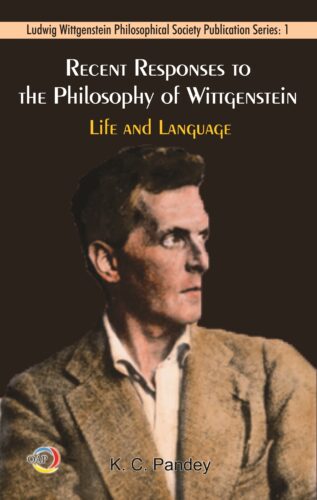
The book gives a fresh interpretation from the perspectives of recent issues raised on life and language in the philosophy of Wittgenstein. The essays contained in this anthology explore philosophical issues that have been raised during recent debates and discussions in Wittgensteinian epistemology, theology, logic, ethics, religion, social science, cultural studies, psychology and language.
The essays contained in this anthology explore philosophical issues which have often been raised during recent debates and discussions in Wittgensteinian epistemology, theology, logic, ethics, religion, social science, cultural studies, psychology and language. It is based on the idea that Wittgenstein’s thoughts have not only been interpreted by the academicians in philosophy, but have been used as a method in many other fields of Humanities and Social Sciences as well. Keeping in view this idea, the book gives a fresh interpretation from the perspectives of recent issues raised on life and language in the philosophy of Wittgenstein. It discusses Wittgensteinian issues through the perspectives of the Indian as well as the contemporary world.
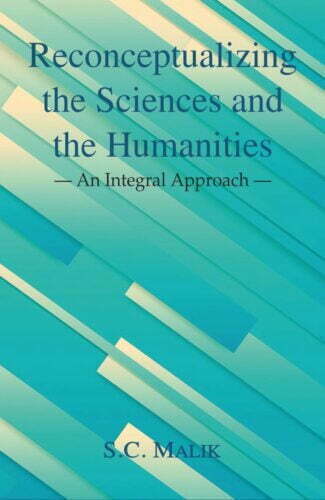
This book looks at recent developments in the sciences and the humanities taking into account many disciplines. The integral approach suggests radical departures by presenting alternate paradigms to the consumeristic paradigm which governs humankind today.
This book by an anthropologist looks at recent developments in the sciences and the humanities taking into account many disciplines. The integral approach suggests radical departures by presenting alternate paradigms to the consumeristic paradigm which governs humankind today. This reconceptualizing through a rethinking is the only way a shift in lifestyles can be brought about if we wish to avoid the disasters which are upon us in terms of the oftstated ecological, socio-economic, psychological and spiritual crises. The implications of science in the new age are crucial for the growth and relevance of those disciplines which study the human phenomenon. By and large, in these academic disciplines general concepts have neglected the role of Consciousness which is a must in any integral approach.
Each chapter is governed by this overall context, as it is exemplified in the different topics dealt with from the viewpoint of many disciplines. The argument is not a linear sequential one, and in this sense each chapter is self-contained especially because the basic premise is that it is both the observer and the observed which have to be thoroughly understood at the particular and the universal levels. Science itself is moving into metaphysics, converging well into mystical insights and ancient speculative thought. The various themes of the book are: Civilization Studies and Knowledge: A Holistic Approach; Rock Art: A Creative Act; Man in Nature: An Integral Universe; A Question of Consciousness; Science and Consciousness; Violence and Non-Violence: A Binary System; and Integral Listening as Communication.

This book, a translation of Sage Narada’s Narada Bhakti Sutra, is didactic and religious in spirit, and is an intellectual attempt to elucidate two approaches to bhakti, one for the intellectually inclined and the other for the emotionally inclined. It has many more facets that relate to personal experience of that Supreme Love by which bhakti is defined.
The Narada Bhakti Sutra is didactic and religious in spirit, but this new translation and interpretation by Dr Alka Tyagi is an attempt to elucidate bhakti in all its facets without the need for the religious paraphernalia. The focus of this text is to reveal bhakti as a methodical approach that can lead to an experience of Supreme Love by which it is defined.
There are two streams of thought that go hand in hand in the text. The first line of thought indicates bhakti (the Supreme Love) as a progressive path towards a goal. The second line of thought conveys bhakti as a path which is simultaneously the goal as well. For those who are clearly emotionally inclined, it is easy to choose the second line of thought where bhakti is the goal itself.
Those who are intellectually inclined might find it difficult in the beginning to exercise unconditional love. For them, the first line of thought will work better. They can consciously choose bhakti (the path of love) as a step by step progressive path towards fulfilment and joy in life. For them, the rules of truth, non-violence, non-duality along with the rituals of ekadasadha-bhakti (the elevenfold bhakti) as prescribed by Sage Narada could be helpful techniques.
Bhakti, whether it is adopted as a process or is taken up as a goal, is a means to direct the emotional energy in every human being in a positive direction in order to experience and attain fullness in life.

Various articles in this anthology have successfully explored folk psychological notions as found in contemporary Western Philosophy of Mind in the Indian context. These collective reflections on the nature of Indian folk psychology are bound to enrich our understanding of the mind in Indian philosophy.
Reconstructing Folk Psychology is the outcome of a research that looks into the possibility of locating folk psychological structures and issues within the domain of classical Indian philosophy. Starting from the concepts of belief, desire to perception and the consciousness of time and even the way in which we address ourselves, the I, the authors of the various articles in this anthology have successfully explored folk psychological notions as found in contemporary Western Philosophy of Mind in the Indian context. This volume thus tries to locate and reconstruct folk psychological issues within Indian philosophy, paying particular attention to the classical Indian tradition.
Needless to say, each of the authors in this volume is an expert in his or her respective area and these collective reflections on the nature of Indian folk psychology are bound to enrich our understanding of the mind in Indian philosophy.
This short but interesting book should capture the interest and attention of who is who in the domain of Indian philosophy and psychology.
This anthology, consisting of fourteen essays, deals with a variety of themes that are of central importance for an authentic appreciation of the philosophical core of the Indian culture. The readers will find here illuminating discussions on various issues that bear witness to the critical thinking and deep reflection on the part of the author that have enabled her to carefully expose the subtle internal divergences that nourish the Indian conceptual world.
Based on arduous and painstaking research, these essays focus on a range of topics. There are several essays on multiple aspects of the large themes of time and consciousness, penetrating analysis showing how in the ancient discourse ideas of klesha (affliction), abhyasa (practice) and karuna (compassion) as well as on women and values are dealt with. There are also deliberations on the themes of religious diversity and the need for an encounter of world religions along with the attempt to explore India’s self-image. All these have contemporary relevance, as these essays clearly bring out the distinctive character of a living culture.
| There are no products |